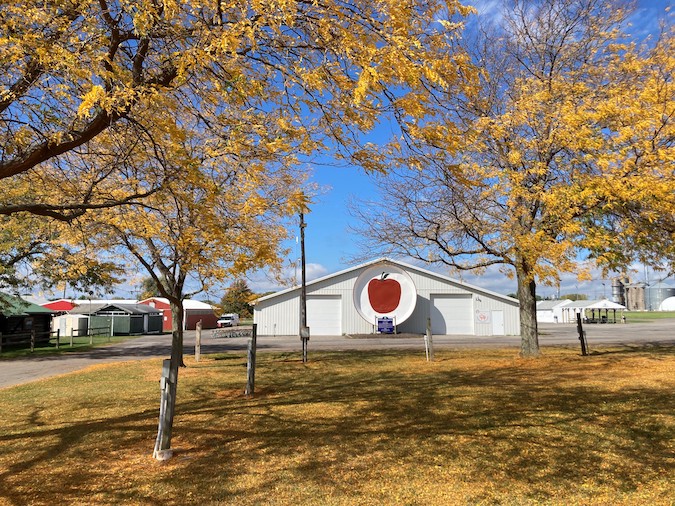Master gardener urges ‘Leave the Leaves!’ to benefit soil health, nature
Contributed by Master Gardener Deb Roberts
The trees are turning beautiful colors…and the leaves are falling onto everything! Before you just blow or rake those leaves into bags or to the street, STOP! There is an alternative that will improve the environment, save you money, beautify your yard, and save pollinators & other important creatures – LEAVE THE LEAVES!
According to US EPA reports we have 40 million acres of lawn in the United States making it the number one crop! The US EPA estimates that leaves and other yard debris make up 13% of our solid waste that goes to landfills. By keeping our leaves, we are reducing the solid waste in landfills and the methane they create. Think of it as recycling in place.
Now, leaving the leaves doesn’t mean you have to just leave them where they lay, though you could, but they may not be in the best location to provide all these benefits. The optimal action you can take is to rake your leaves into garden beds or other plantings as mulch up to about 6 inches deep.
Over time the leaf mulch breaks down into the perfect fertilizer. Also you can rake them into deeper circle-piles around established trees as mulch. The mulch helps to retain moisture and to reduce run-off from sudden rains.
If you have extra leaves from sidewalks or driveways, leaves can be composted in a bin or pile in a corner of your yard. A light layer of leaves can be left on grass where it will break down into fertilizer as well. All of which saves you money next year on buying mulch and fertilizers, plus it beautifies your yard – two for one!
There are exceptions, however. Black Walnut leaves and Pine Needles can inhibit desired plant growth and alter soil chemistry, so those are best kept out of your garden beds.
You may have mowed the leaves laying on the lawn in the past, which is another alternative, however leaves are a vital wildlife habitat providing food, shelter and nests for many species. Toads, turtles, birds, butterflies in their various stages, fireflies, and bumblebees are among them. Most butterflies and moths do not migrate like the Monarch, most of them live their entire life cycle in a yard!
By leaving a layer of leaves around trees, it creates a “soft landing” for insects that drop from the tree to the ground where they overwinter. Swallowtail butterflies and Luna moths use leaves to attach their cocoons.
Wooly bear caterpillars, which will become Isabella Tiger Moths next spring, overwinter best underneath a pile of leaves. Firefly larvae and Bumblebee queens overwinter a couple of inches under the surface of the soil and need the leaves as insulation to survive.
The larvae and insects that overwinter may even become food for baby birds next spring! If you have the space, a brush shelter with some fallen branches and a pile of leaves is a great space for insect eating animals like salamanders, toads, box turtles, and chipmunks to overwinter.
So when it’s time to rake your lawn, be a hero to wildlife and the environment by keeping leaves away from curbside pickup – Leave the Leaves!
For more information about Leaving the Leaves, check out National Wildlife Foundation, Xerces.org, and Cooperative Extension.










































































